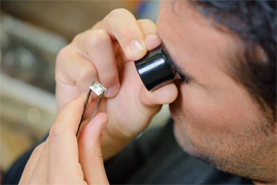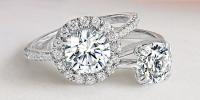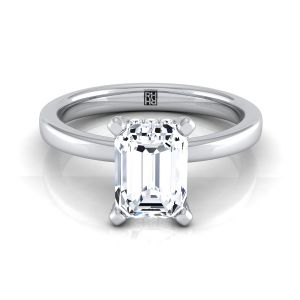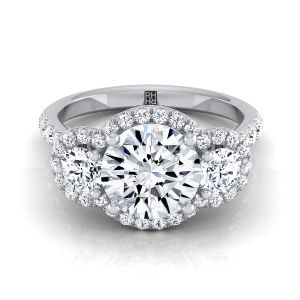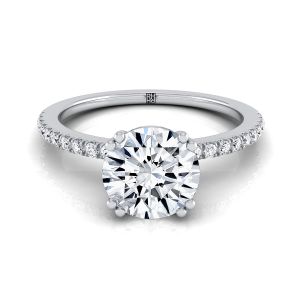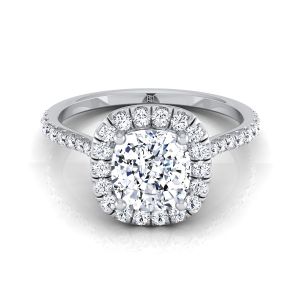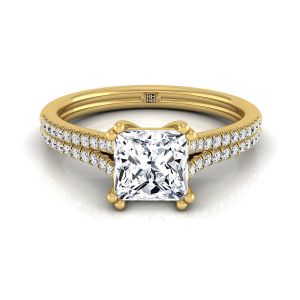 Emerald cut
Emerald cut is one of the famous diamond cuts in the market these days. However, how did it first start off?
The first
emerald cut can be traced back to 330 BC, which is around the time when Ancient Egyptians started mining and cutting emeralds. The gems quickly became famous for their color saturation, with some of the more exceptional emeralds even costing more than diamonds. This is one of the reasons why the emerald cut is used for laying out the color of the stone, instead of its brilliance.

Classically, the
emerald cut has a rectangle with bevels at the corners, as you would see in your 1 ct emerald cut diamond engagement ring. However, you can also find square shaped emeralds, otherwise called Asscher cut stones. Both belong to a family called step-cuts, with the name derived from the many steps of pavilion and crown facets. The more the number of facets, the better the mirror effect. This works to bring up the internal reflections and boosts color retention.
In a standard
emerald cut, you have 58 facets and a table facet. There are also a 4-step pavilion and a 3-step crown, as well as a culet. There are 8 facets on every step. With the brilliance of emerald cut being relatively low, but the elegance is undeniable.
 Emerald cut is one of the famous diamond cuts in the market these days. However, how did it first start off?
The first emerald cut can be traced back to 330 BC, which is around the time when Ancient Egyptians started mining and cutting emeralds. The gems quickly became famous for their color saturation, with some of the more exceptional emeralds even costing more than diamonds. This is one of the reasons why the emerald cut is used for laying out the color of the stone, instead of its brilliance.
Emerald cut is one of the famous diamond cuts in the market these days. However, how did it first start off?
The first emerald cut can be traced back to 330 BC, which is around the time when Ancient Egyptians started mining and cutting emeralds. The gems quickly became famous for their color saturation, with some of the more exceptional emeralds even costing more than diamonds. This is one of the reasons why the emerald cut is used for laying out the color of the stone, instead of its brilliance.
 Classically, the emerald cut has a rectangle with bevels at the corners, as you would see in your 1 ct emerald cut diamond engagement ring. However, you can also find square shaped emeralds, otherwise called Asscher cut stones. Both belong to a family called step-cuts, with the name derived from the many steps of pavilion and crown facets. The more the number of facets, the better the mirror effect. This works to bring up the internal reflections and boosts color retention.
In a standard emerald cut, you have 58 facets and a table facet. There are also a 4-step pavilion and a 3-step crown, as well as a culet. There are 8 facets on every step. With the brilliance of emerald cut being relatively low, but the elegance is undeniable.
Classically, the emerald cut has a rectangle with bevels at the corners, as you would see in your 1 ct emerald cut diamond engagement ring. However, you can also find square shaped emeralds, otherwise called Asscher cut stones. Both belong to a family called step-cuts, with the name derived from the many steps of pavilion and crown facets. The more the number of facets, the better the mirror effect. This works to bring up the internal reflections and boosts color retention.
In a standard emerald cut, you have 58 facets and a table facet. There are also a 4-step pavilion and a 3-step crown, as well as a culet. There are 8 facets on every step. With the brilliance of emerald cut being relatively low, but the elegance is undeniable.









